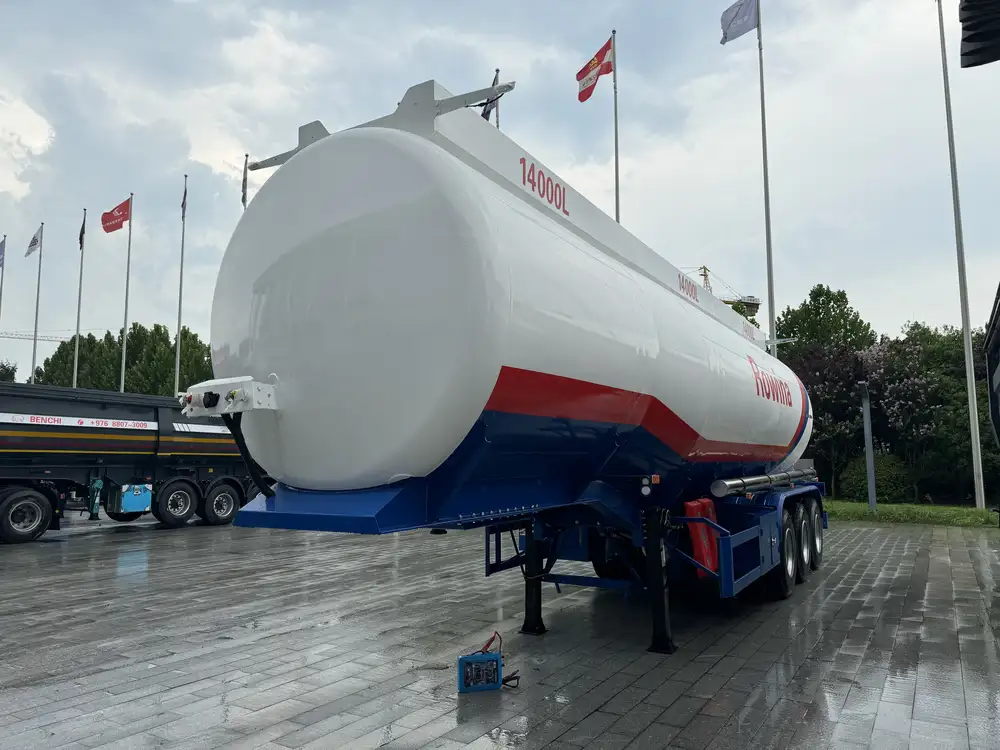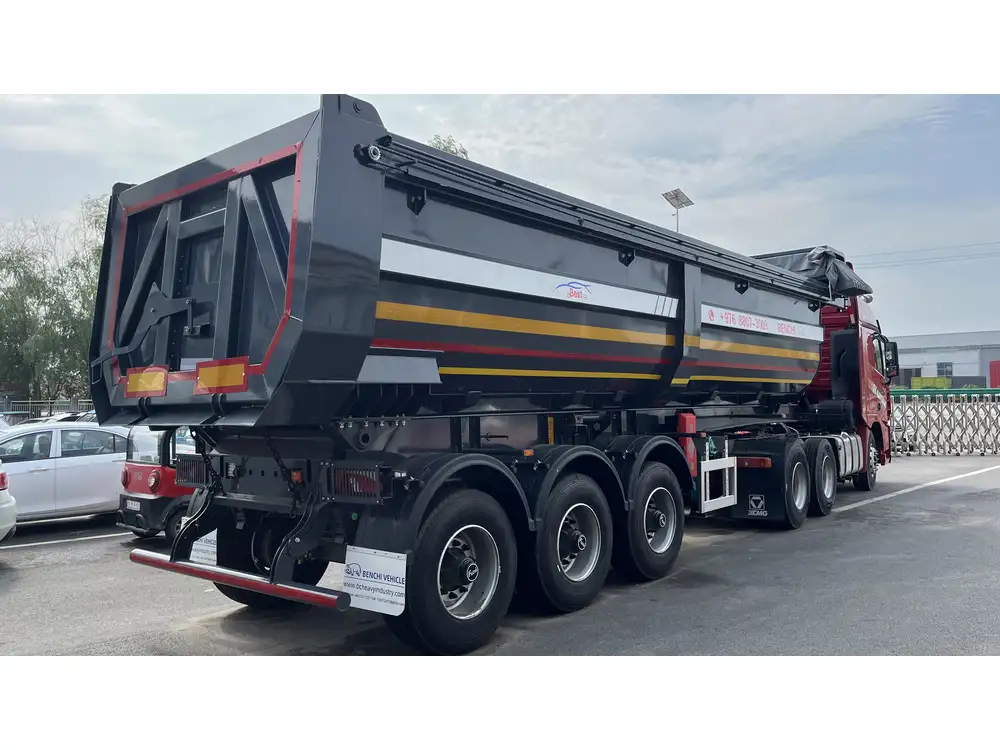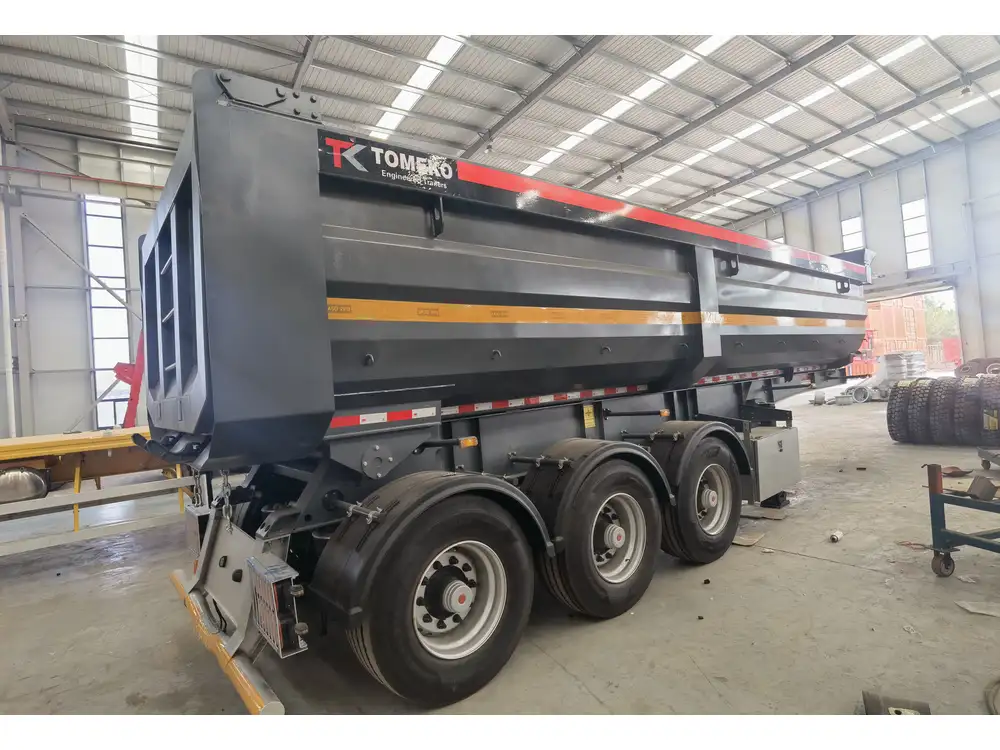Backing up a semi-trailer can strike fear into the hearts of novice truckers, sparking questions of difficulty and prowess in maneuvering these colossal vehicles. In this comprehensive guide, we will delve into the intricacies of backing up a semi-trailer, addressing common challenges, offering practical solutions, and enhancing your overall understanding of this essential skill.
Understanding the Complexity of Backing Up a Semi-Trailer
1. The Structure of a Semi-Trailer
Before we dive into the mechanics of backing up, it’s essential to comprehend the structure of a semi-trailer. These vehicles consist of a tractor unit and a trailer, where the trailer typically pivots around the fifth wheel located on the tractor. This unique design creates a specific set of challenges when maneuvering, particularly in reverse.
| Aspect | Description |
|---|---|
| Length | Ranges from 28 to 53 feet or more. |
| Weight | Can weigh up to 80,000 pounds (combined weight limit). |
| Turning Radius | Wider than most vehicles due to length. |
| Attachment Point | Fifth wheel connection leading to pivot constraints. |

2. Common Challenges When Backing Up
Several factors contribute to the complexity of backing up a semi-trailer:
- Length and Weight: The extended size requires a greater awareness of space and surroundings.
- Blind Spots: Large trailers have significant blind spots that can obscure visibility during parking or reversing maneuvers.
- Lack of Practice: Inexperience with backing techniques results in hesitation and anxiety.
Essential Techniques for Backing Up a Semi-Trailer
1. The Basic Approach: Know Your Position
Before initiating your reverse maneuver, establish your position. Here are several key steps:
- Mirrors and Cameras: Familiarize yourself with your vehicle’s mirrors and any rearview or side camera systems. Using these effectively allows for greater spatial awareness.
- Position the Tractor: Ideally, your tractor should be angled about 45 degrees to the trailer’s side. This alignment narrows your blind spots, ensuring better visibility.

2. The Use of Reference Points
Creating mental reference points can significantly aid the backing process. Notable techniques include:
- The “Fifth Wheel Method”: Keep an eye on the trailer’s rear while monitoring the fifth wheel connector. This technique will help anticipate how the trailer moves in response to steering inputs.
- Setting Markers: Utilize cones or ground markers during practice sessions to create visual guides that orient your maneuvers.
Step-by-Step Guide to Backing Up a Semi-Trailer
Step 1: Preparing to Back Up
- Clear the Area: Ensure the area behind you is free of obstacles, pedestrians, and fellow drivers.
- Set the Gear: Put the vehicle in reverse while firmly engaging the brake.
- Engage Your Mirrors: Adjust your mirrors to maximize visibility—checking all angles should become second nature.

Step 2: Initiating the Reverse
- Start Slowly: Shift into reverse in a controlled and gradual manner, focusing on the movement of the trailer.
- Steer the Tractor: Begin turning towards the direction you want the trailer rear to move. Small adjustments are more effective than large, sweeping motions.
Step 3: Adjust and Align
- Track the Trailer: Watch how the trailer pivots. If it begins to veer, adjust by turning the steering wheel in the opposite direction (for example, if the trailer moves left, steer slightly right).
- Look Ahead: Constantly glance at your mirrors and reference markers, ensuring alignment with the spot you wish to back into.
Step 4: Completing the Maneuver
- Straighten Out: As you near your destination, straighten the tractor and continue to use your mirrors until the vehicle is fully aligned.
- Final Adjustments: Make any final positional corrections to secure your parking.

Safety Considerations While Backing Up a Semi-Trailer
1. Ensuring Visibility
Being able to see is paramount. Utilize mirrors effectively, ensure the area is well-lit when reversing at night, and avoid relying solely on technology; it has limitations.
2. The Importance of Spotters
When backing into particularly tight spaces or when visibility is compromised, having a spotter can be invaluable. This individual can provide live feedback, indicating potential hazards, and facilitating smooth maneuvering.

3. Understanding Local Regulations
Different states and regions have varying regulations regarding truck maneuvers and parking. Familiarizing yourself with these laws can not only keep you compliant but also promote safe driving practices.
Facing the Inevitable Hurdles
1. Overcoming Anxiety and Building Confidence
Backing up a semi-trailer is a skill acquired through practice and patience:
- Practice in Low-Stress Environments: Start in empty parking lots before tackling more challenging scenarios.
- Simulators: Consider truck-driving simulators as they can provide risk-free scenarios for developing instincts and reflexes.

2. Handling Variable Conditions
Weather conditions such as rain or snow can complicate backing maneuvers.
- Adjust for Conditions: Use slower speeds, increased caution, and maintain longer stopping distances when reversing in adverse weather.
Advanced Techniques for Experienced Drivers
Once you’ve mastered standard backing techniques, consider advancing your skill set with these additional tips:
1. The Alley Dock Method
- This technique involves approaching a dock from the side rather than head-on. It necessitates a keen eye for angles and often requires more extensive spatial adjustments.

2. The Blind Side Backing
- Docking without relying solely on mirrors can build situational awareness. While inherently riskier, this method develops instincts that enhance overall driving skills.
Conclusion: Mastering Backing Up a Semi-Trailer
Backing up a semi-trailer is undoubtedly a complex skill; however, by understanding the mechanics, utilizing proper techniques, and practicing consistently, any driver can develop competence and eventually confidence. Remember, the ability to maneuver a semi-trailer in reverse hinges on a blend of preparation, practice, and safety considerations.
Incorporating these strategies into your routine can elevate your driving prowess, transforming a daunting task into a manageable, even enjoyable, endeavor.
By fostering a culture of safety and continuous improvement, we aim not only to elevate individual skills but also to enhance the overall stature of the logistics industry, paving the way for adept professionals who can navigate even the most tangled traffic and tight spaces with ease.



